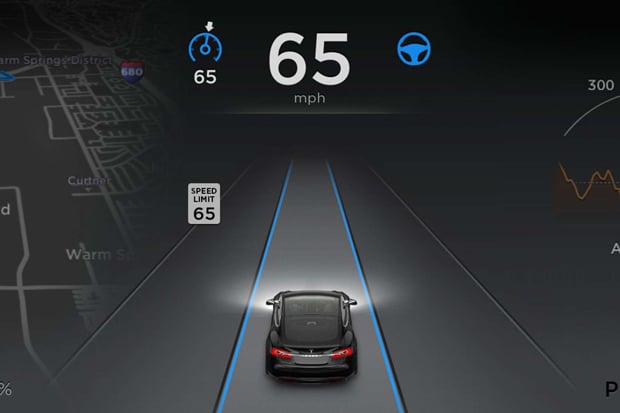Tesla Model S Autopilot Beta Arrives With Nearly Hands-Free Operation
Today, Tesla is back in the news for a feature that is being introduced to its critically acclaimed Model S. Tesla Autopilot is the headlining feature in Tesla Version 7.0 software. Autopilot works in conjunction with hardware that has been incorporated into every Model S built since September 2014. That hardware includes forward-looking radar, a forward-looking camera mounted in the windshield, 12 ultrasonic sensors (the sensors are placed around the perimeter of the vehicle and can “see” 16-feet around the vehicle) and electric brake assist system.
With the Tesla Version 7.0 software update, all of that hardware is now coming to life to allow you to travel down the highway in near-autonomous fashion. “Autopilot allows Model S to steer within a lane, change lanes with the simple tap of a turn signal, and manage speed by using active, traffic-aware cruise control,” wrote the Tesla team in a corporate blog. “Digital control of motors, brakes, and steering helps avoid collisions from the front and sides, as well as preventing the car from wandering off the road.

“Your car can also scan for a parking space, alert you when one is available, and parallel park on command.”
While Tesla Autopilot can be used in urban environments, the system best shines when on the open highway where the speeds are high and there aren’t any sharp turns to navigate (Tesla Autopilot, unfortunately, can’t handle low-speed, 90-degree left and right hand turns). In addition, Tesla Autopilot requires that road lines be clearly visible to the vehicle’s cameras. If no clear line is available, the system will alert the driver to take command of the vehicle.

“While truly driverless cars are still a few years away, Tesla Autopilot functions like the systems that airplane pilots use when conditions are clear,” the Tesla team continues. “The driver is still responsible for, and ultimately in control of, the car.”
While Tesla isn’t the first car maker to introduce semi-autonomous functionality to production vehicles (the current generation Mercedes S-Class holds that honor), the company does have the advantage of upgrading current vehicles over-the-air with such functionality, which is unheard of with rank and file automakers.


